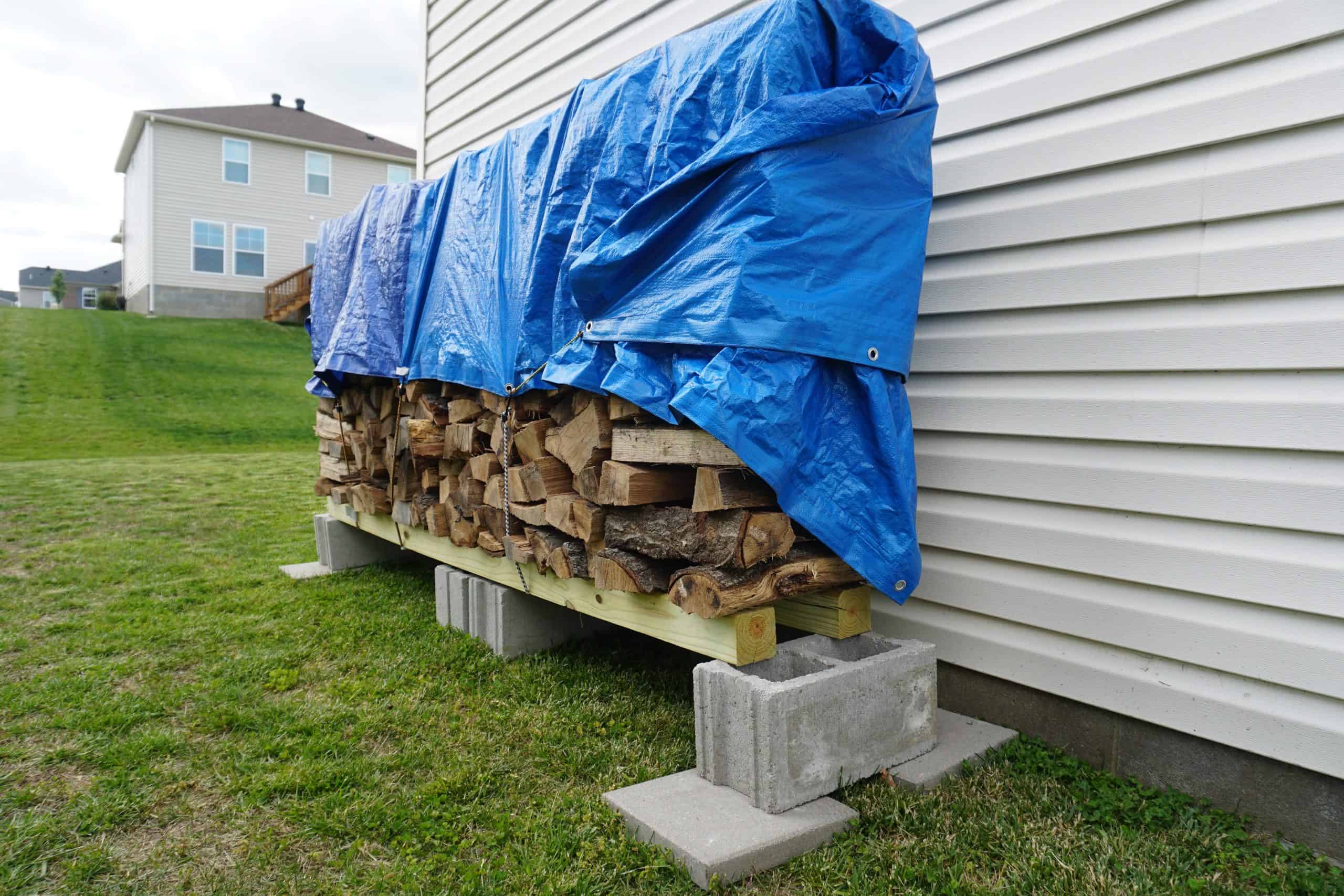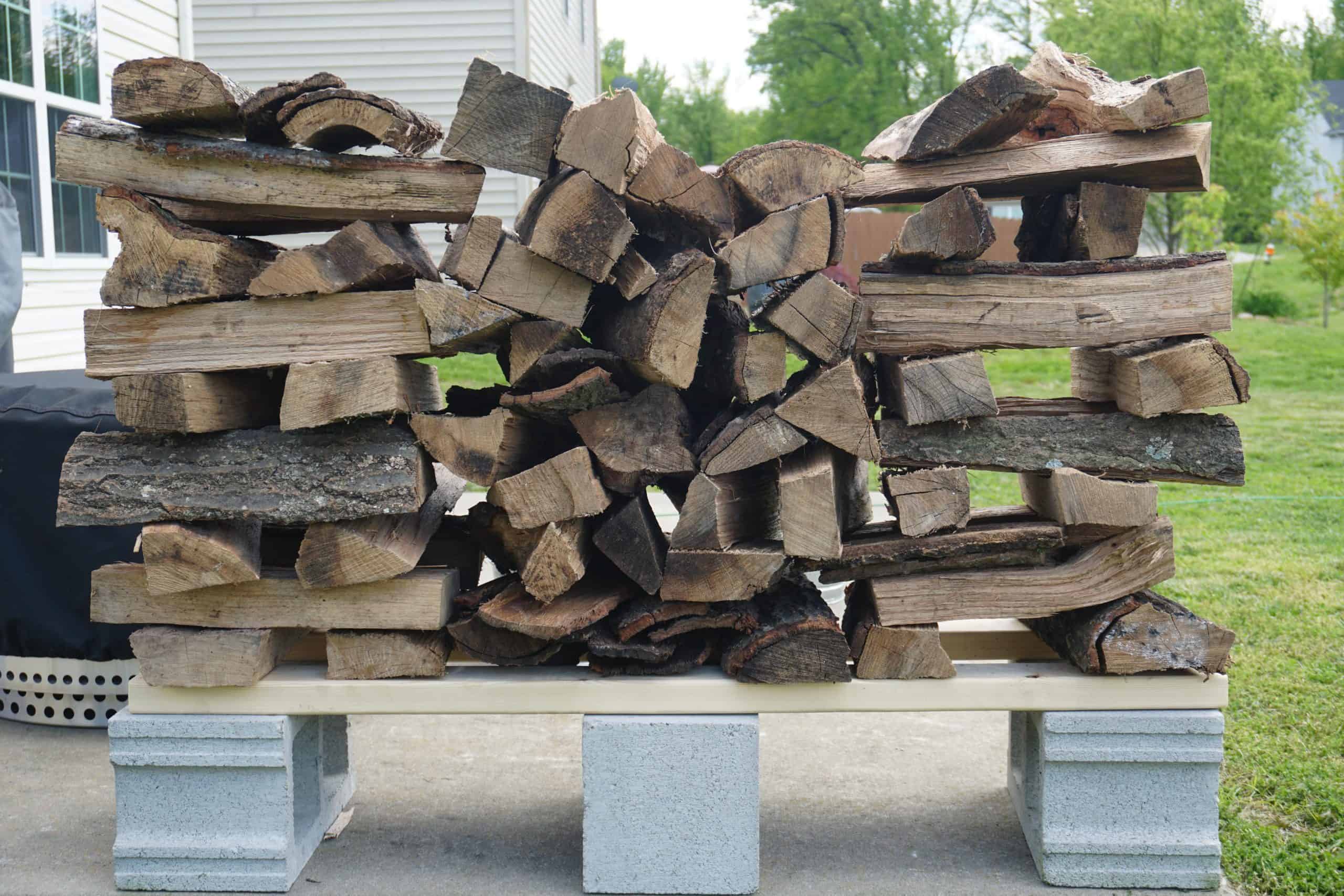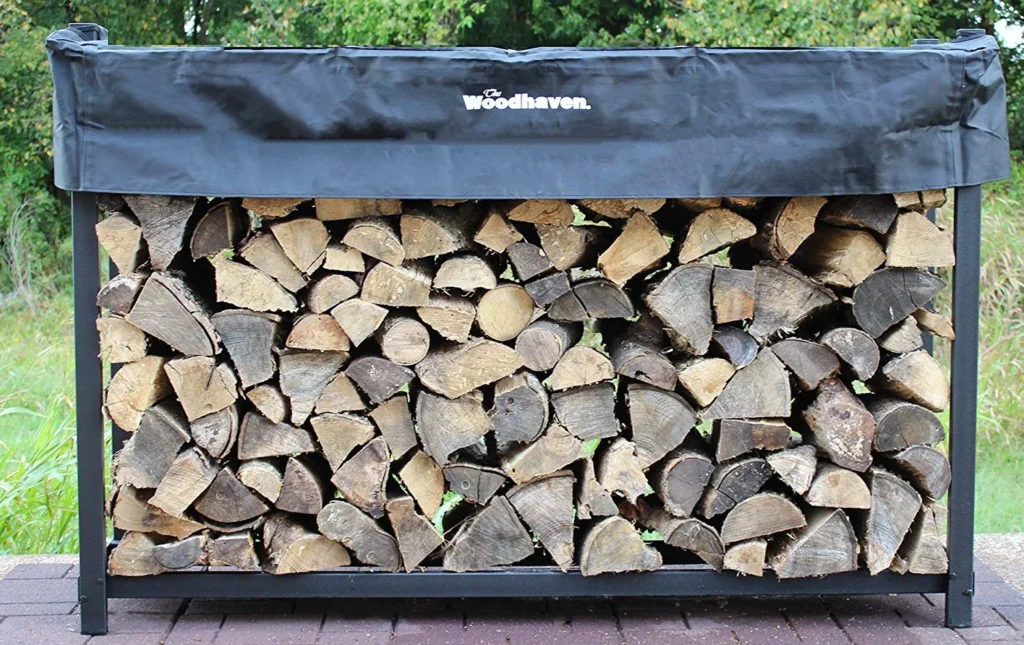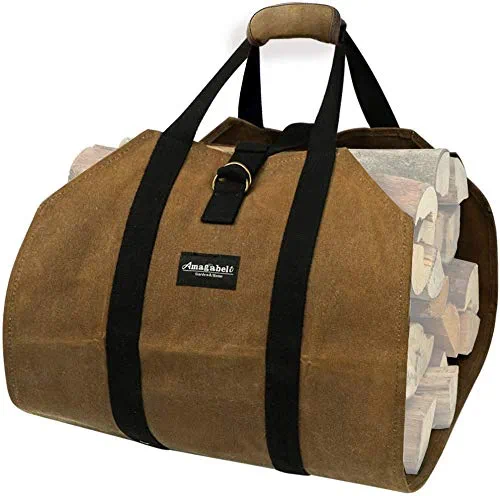You’ll thank yourself miles down the road if you take the time to follow the tips below to properly store your firewood. Improper storage can lead to rot, water-logged firewood, bug problems, and a host of other issues that are easily avoided. You don’t have to spend a lot of money, but taking a few minutes to plan will save you hours of frustration later.
How to Properly Store Firewood
Start by choosing the right location. If possible, keep your main stack of wood 20’ or more from the house. Doing this will help prevent any bugs or critters from moving from the wood stack to your home.
It’s not a huge issue if you need to store it closer, or in some cases, right on the side of the house. Many people keep their wood on their back porch and will never have a single issue with it.
CAUTION
If storing close to your home, be sure there is no ignition source nearby. Keeping too much wood too close to the home is a fire hazard. It is better to keep a large stack farther away and make multiple trips.
Elevate Your Wood
The next step is getting your wood off the ground. The purpose of this is two-fold. For one, it keeps the bottom logs dry and prevents your pile from sinking into the ground when it rains. You should elevate your woodpile even if you plan on storing on concrete or another hard surface. This will help deter any critters from making a home on the lower levels.
Secondly, it allows air to flow through the bottom and rid the logs of any regular moisture that naturally occurs.
You do not have to spend a lot of money on a fancy steel log rack. You can head to your local big-box store and buy 4x cinder blocks, 4x concrete pavers, and 2x 6’ 4×4’s. This should cost around $25-$30 and will provide enough space to store a face cord of wood.
The 4×4’s do not even touch the cinderblocks in the center. Pressure-treated lumber helps to resist exposure to the elements.
Your concrete pavers will act as a place to distribute the weight put on the cinder blocks. This will prevent the stack from sinking into the ground. The 4×4’s can handle the load, and if you want to be extra cautious, you can purchase additional cinder blocks to place in the center for more support.
Stack Your Wood the Right Way
If your firewood is already seasoned, then airflow is not as big of a concern as protection from the rain is. You stack wood one right on top of the other with the end grain facing you.
However, if your wood has not been seasoned or is still in the seasoning process, it’s best to stack it in a log cabin configuration. This means placing two logs parallel to one another, then placing another two, perpendicular to the first row on top.
The ‘log-cabin’ style configuration can be seen on the ends, with wood stacked in the middle on this smaller ‘working’ stack. This style takes up much more space but allows for adequate airflow on all sides and faces of the wood.
If you are using the cinder block and 4×4 storage method mentioned above, you’ll want to use a log cabin-style stack on the ends, then pile up in the middle. This provides stability to the ends, so your pile won’t roll off the edges.
You will want to make sure their wood has some space to breathe if it is close to another structure. At least 6 inches of space is recommended.
Cover And Protect Your Wood
Rain and moisture are the enemies. For wood that has already been seasoned, a cheap tarp and bungee cords from Harbor Freight are an inexpensive solution.
PRO-TIP
Purchase a couple of extra tarps and packs of bungee cords. These will deteriorate and break down over time. It only costs a few dollars extra to have backups on hand, especially if you use Harbor Freight coupons.
However, if your wood has not yet been seasoned, you will only want to partially cover the wood. Meaning you’ll want to either only cover the upper portion to keep the rain off or build a semi-permanent structure to deflect rain. A cheap and straightforward structure can be made of corrugated metal, 2x4s, and OSB plywood.
This is to allow moisture to leave the stack and air to flow to all parts of the wood.
Best Way to Store Firewood
As long as you follow the advice above, you can rest assured your firewood will stay dry and be ready to burn when you need it. Storage can be as cheap or as expensive as you want it to be. Just remember:
- Keep it away from your home
- Elevate the wood off the ground
- Cover and protect the wood from rain and moisture
Manufacturing plants and shipping docks sometimes give away old pallets for free, which are great for storage. Pallets will keep the wood off the ground and allow air to circulate upward. Additionally, they’ll distribute the weight so your stack won’t sink into the ground. Pallet wood can also be taken apart and rebuilt as a separate structure.
Unless you’re willing to take on another project, a more straightforward solution is to buy a prefabricated steel rack. When looking at racks online, pay attention to the steel used. Ideally, square or rectangular tubing is preferred to the pipe. The thicker the steel, the better.
The firewood rack below is an excellent option as it uses 16 gauge steel and stainless steel nuts and bolts. The frame is powder-coated to endure the elements, and custom-fit covers are available for it.
We recommend the Woodhaven Black 6′ Firewood Rack
You’ll notice this is a much better option than a lot of the racks seen on Amazon. The problem with most firewood racks on Amazon is they utilize a thin metal frame that is flimsy at best. However, if you’re on a budget, the ‘cinder block and 4×4’ solution is cheaper and sturdier in than anything you’ll find on Amazon.
How to Store Firewood Outside in Winter
If you’re using firewood in winter, then you’re probably using it to warm your home. If you don’t have a permanent structure already, you’re going to want to build one. You’ll want to use an above-ground, open shed type of design. You can find lots of these designs on Pinterest and other sites.
Most people who heat their homes with a wood stove, bring in wood by the bundle using a leather tote. These are typically made of leather, canvas, or some other thick material. These are inexpensive, and the ones on Amazon will not be very different in quality from the one you may purchase from an outdoor furniture dealer.
We recommend the Amagabeli Firewood Carrier
To save yourself from making multiple trips on an unusually cold night, you may want to keep a smaller stack closer to home. This can be stacked during the day so that if you have to make a trip out at dusk, the ‘working’ stack is close by. You will still use your larger stack, but you’re breaking up the trips you’ll need to take.
FAQs
Question: Should you store firewood in your garage?
Answer: Generally speaking, unless it has been kiln-dried, no. Storing any wood that hasn’t been kiln-dried anywhere indoors can bring many issues that aren’t worth the trouble. Any sort of bugs or insects that are living in the wood like termites, spiders, ants, etc. now has easy access to your home.
Question: How long can you store firewood outside?
Answer: As long as the wood is protected from rain or other moisture and is elevated off the ground, there is generally no time limit on how long you can store wood. Wood will only start to decay after water has been introduced.
Question: How to store firewood in the summer?
Answer: Summertime wood storage follows the same principles mentioned earlier. Keep it off the ground, away from your home, and protected from the rain. Summer can be particularly tricky because insects are buzzing around. If you do not want to deal with bees, wasps, or other bugs in your woodpile, it’s essential to keep it far away from your home or where you hang out.
Question: How to store firewood to avoid termites?
Answer: Termites love dark and moist places. Again, keep your stack far away from your home, so they don’t move from one location to another. Stack your firewood on the highest point of your yard, away from where water accumulates and keep it at least 8 inches off the ground. Keep your pile dry and protected from rain and in as much direct sunlight as possible.









